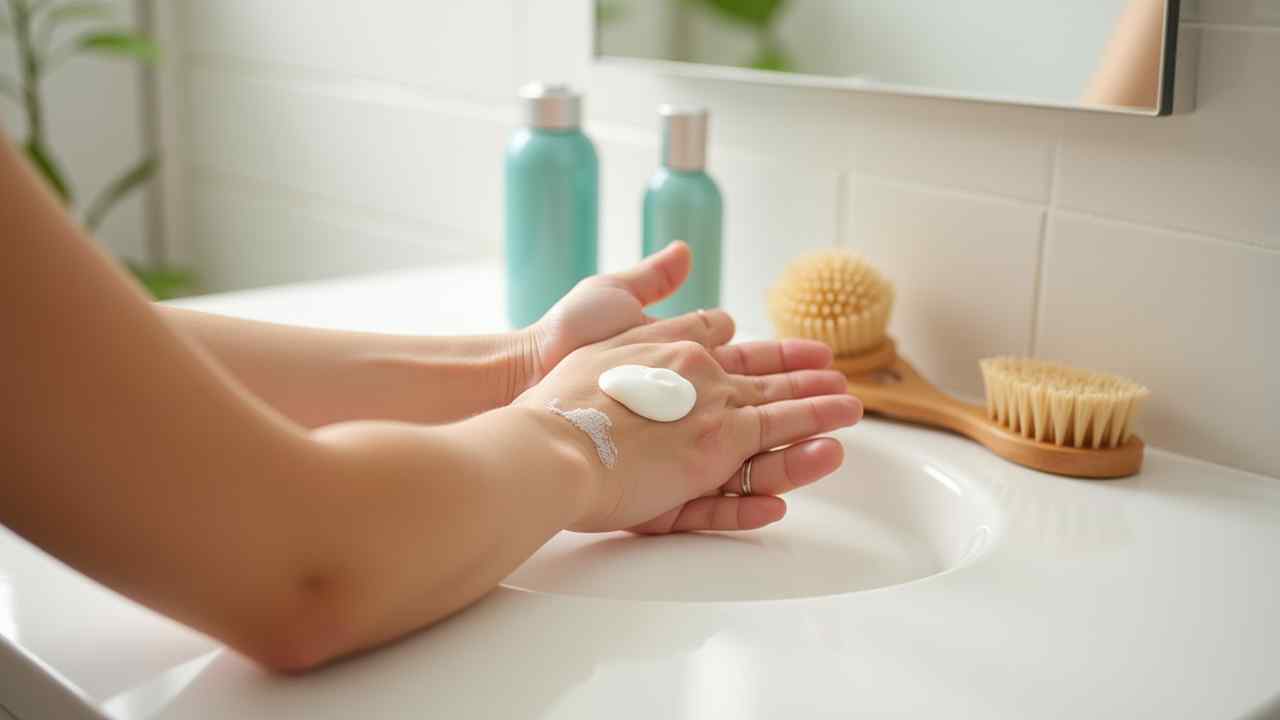
✨ How to Treat Rough Skin Patches (A Guide to a Smoother You)
✨ How to Treat Rough Skin Patches (A Guide to a Smoother Complexion) ✨
Rough, bumpy, or scaly patches on the skin are a very common concern. They can appear on your arms, legs, or elbows. They can make your skin look dull and feel uncomfortable. This is often caused by dryness and a buildup of dead skin cells.
The great news is that you can significantly improve your skin's texture. So, how do you treat rough skin patches? The answer is a consistent routine. It should focus on two key actions: exfoliation and moisturization. This powerful duo can restore your skin's smoothness.
This guide will walk you through the most effective methods. We will cover the best ingredients to look for. Let's start your journey to softer, smoother skin. ✅
Medical Note: If your rough patches are persistently red, itchy, or painful, please see a dermatologist. It could be a sign of a condition like eczema or psoriasis that requires medical treatment.
Step 1: How Do You Exfoliate to Remove Roughness?
Exfoliation is the most important step for treating rough texture. A buildup of dead skin cells is the primary cause of roughness. Exfoliation works to remove this top layer. This reveals the smoother, softer skin underneath.
Why is chemical exfoliation often best?
Chemical exfoliants are often more effective than physical scrubs. They work by dissolving the "glue" that holds dead skin cells together. This provides a more even and thorough exfoliation. The best ingredients for rough body skin are:
- Alpha-Hydroxy Acids (AHAs): Look for body lotions with glycolic acid or lactic acid. These are fantastic for smoothing rough texture and brightening the skin.
- Urea: This is a superstar ingredient for rough skin. It is a keratolytic, which means it breaks down the excess protein (keratin) that causes bumps. It is also an excellent moisturizer.
Is physical exfoliation okay?
Yes, gentle physical exfoliation can also be helpful. You can use a dry brush on your skin before you shower. A gentle body scrub with fine particles, like a sugar scrub, can also be used a few times a week.
Step 2: How Do You Deeply Moisturize and Hydrate the Skin?
After you exfoliate, you must hydrate. This is a crucial step to treat rough skin patches. Moisturizing softens the skin. It also helps to repair your skin's protective barrier. A healthy barrier is essential for smooth skin.
What are the best moisturizing ingredients?
You need a rich, nourishing moisturizer. Thin lotions may not be enough. Look for creams or ointments with these powerful ingredients:
- Ceramides: These are the natural fats that hold your skin cells together. They are essential for barrier repair.
- Hyaluronic Acid and Glycerin: These are humectants. They draw water into your skin, keeping it plump and hydrated.
- Shea Butter: This is a rich emollient that locks in moisture and softens the skin.
What is the best application technique?
The best time to moisturize is right after a shower or bath. Gently pat your skin with a towel, leaving it slightly damp. Applying your moisturizer to damp skin helps to trap the most moisture. This keeps your skin hydrated for much longer. 💧
⭐ What Does a Simple Routine for Rough Skin Patches Look Like?
Consistency is everything. Here is a simple but effective daily routine to help treat rough skin patches on your arms and legs. It combines exfoliation and hydration perfectly.
In the Morning:
- Rinse your skin with lukewarm water.
- Apply a simple, hydrating moisturizer to damp skin.
- If your skin will be exposed to the sun, apply a broad-spectrum sunscreen. ☀️
In the Evening:
- After showering, while your skin is still damp...
- Apply your treatment lotion. This should be a body lotion containing an AHA (like glycolic acid) or urea.
- For very rough areas like your heels, you can seal it in with a thin layer of an ointment like Vaseline.